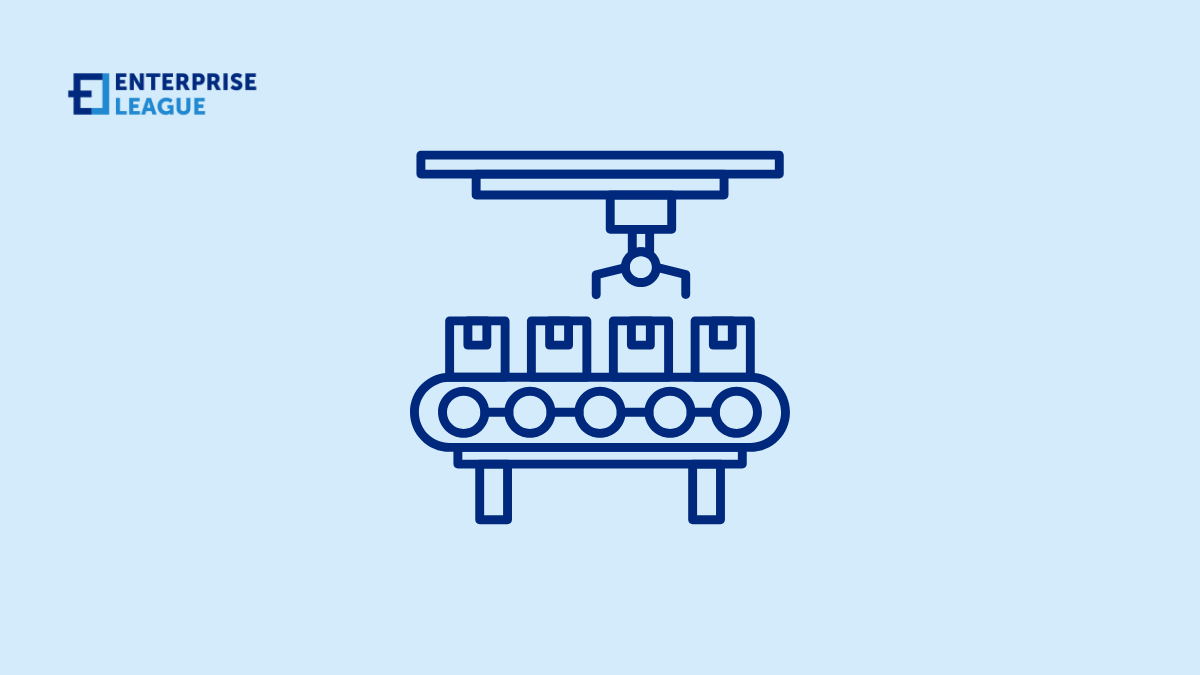Have you ever watched a busy assembly line and wondered how everything fits together so perfectly? Or maybe you’re in charge and are constantly thinking about how to improve it? Well, assembly line optimization isn’t just about cutting down on delays. It’s also about creating a system where every piece moves with purpose.
With that said, here are a few actionable strategies that can push your efficiency to new heights:
Evaluate your current workflow
The first step toward optimizing your assembly line is to assess the current workflow. Start by reviewing each stage of your manufacturing process and identifying tasks that slow things down. As you move through each part, look for bottlenecks or inefficiencies that disrupt the flow. This will give you a clearer idea of where to improve.
For instance, if your clamping system frequently causes delays or requires frequent adjustments, it might signal the need for retraining your team. Providing a clear clamping systems guide can help workers handle the equipment more efficiently.
Improving such processes will ensure the entire workflow remains consistent and productive. You’ll stay on top of potential problems and make timely adjustments to ensure smoother assembly line operations.
Automate where possible
Automation is one of the most effective ways to improve assembly line efficiency. Automating repetitive tasks will help reduce human error and speed up production. For example, robotic arms and conveyor belts can handle many routine jobs. At the same time, automated quality control systems can check for defects.
However, not every task needs automation, so it’s crucial to prioritize the ones that are most time-consuming or prone to errors. Gradually introducing automation allows your team to adapt more easily. This makes the transition smoother and ensures long-term success.
Balance the line
A smooth assembly line is one where every station works roughly at the same pace. If one part of your line is moving faster than another, workers or machines will stand idle, waiting for the next batch. This creates an imbalance that drags down your overall efficiency.
To fix this, analyze how long each station takes to complete its tasks and redistribute work if necessary. This may mean adjusting workloads, shifting workers to different areas, or investing in equipment that speeds up slower processes. The goal is to embrace assembly line balancing, where all tasks are completed at an even rate, minimizing downtime and maximizing output.
Minimize changeover time
Switching from one product to another in some assembly lines can cause significant downtime. This is often referred to as changeover time, a major source of inefficiency. The faster you switch between different products or manufacturing processes, the more productive your line will be.
To minimize changeover time, start by standardizing as many processes as possible so workers can follow the same steps for different products. Next, make sure tools, materials, and instructions are easily accessible and organized. This will reduce the time spent searching for them.
Additionally, invest in quick-change tooling or equipment to speed transitions and reduce downtime. These small changes can lead to big improvements in business productivity and keep your assembly line running smoothly.
Train and empower your team
Technology and systems can only take you so far. Regular training will keep your team updated on new processes, equipment, and safety protocols. Cross-training your staff to handle multiple tasks will add flexibility and allow you to adjust labor based on current needs.
Beyond training, empower your team to take ownership of their roles. Valued personnel are more likely to identify inefficiencies and suggest improvements. Encouraging open communication and problem-solving will help create a culture where everyone contributes to optimizing the assembly line.
Optimize workflow and material handling
Efficient material handling will keep your assembly line running smoothly. When materials or components aren’t where they need to be, workers have to pause their tasks to search for them, which disrupts the workflow and wastes valuable time. Ensuring materials are available at the right time is essential for maintaining productivity.
To improve material handling, organize materials logically, and ensure prompt delivery to workstations. This may require redesigning the assembly line layout to streamline the flow of materials or creating designated storage areas for frequently used items. You could also consider automated material handling systems to enhance speed and efficiency.
Implement lean manufacturing principles
Lean principles can help reduce waste while maximizing value. They can also simplify your assembly line by removing unnecessary steps and focusing on tasks that improve the final product.
Here are some lean principles to consider:
Just-in-time production
Just-in-Time (JIT) production focuses on producing items when they are needed, avoiding overproduction and excess inventory. This keeps production flowing smoothly, reduces storage costs, and ensures that your team uses materials and products efficiently.
Kaizen
Kaizen (continuous improvement) fosters a mindset where your team contributes ideas for minor, manageable improvements. This promotes a culture of constant progress, where even minor changes can help enhance efficiency and streamline the production process.
5S Methodology
The 5S program organizes the workplace through five steps: Sort, Set, Shine, Standardize, and Sustain. Each step helps maintain a clean, orderly environment, which improves workflow, reduces clutter, and ensures that tools and materials are easily accessible for a more efficient assembly process.
Implementing lean manufacturing principles can transform your production line into a highly efficient operation. These strategies will help reduce waste, improve inventory management, and create a culture of continuous improvement, which enhances overall performance.
Conclusion
Optimizing an assembly line is an ongoing process. It’s about looking for ways to improve every part of the system, from equipment and workflows to team dynamics. Remember, the secret to success lies in implementing these strategies and continuously refining them. As technology advances and market demand evolves, so should your optimization efforts. Maintaining a commitment to excellence can transform your assembly line into a model of efficiency.
More must-read stories from Enterprise League:
- Unique ways to show your employees you care about them.
- Innovative customer appreciation ideas for small businesses.
- Things to consider before deciding on a business location.
- Engaging online networking events that you should not miss.
- Entrepreneurs over 70 that have defiled old age.
Related Articles
The 9 Best Payment Processing Services for SaaS
Running a software business means handling money from customers who expect things to work smoothly. They sign up, enter their card details, and assume the rest happens without a hitch. On your end, though, payment processing is a whole different story. You need...
Building a U.S. Real Estate Portfolio: Why Beverly Hills Should Be Your First Step
The United States has long been a magnet for real estate investors seeking stable returns and prestige. Among its many luxury markets, one name consistently stands out: Beverly Hills. Known worldwide for its glamour and exclusivity, it represents more than just a...
Top 7 SEO Services for Law Firm Websites
In the legal sector, digital visibility is the primary determinant of case volume. For attorneys, implementing a specialized SEO service for Law Firm website is a fundamental requirement for operational stability. Generalist marketing strategies frequently fail in...
The 9 Best Payment Processing Services for SaaS
Running a software business means handling money from customers who expect things to work smoothly. They sign up, enter their card details, and assume the rest happens without a hitch. On your end, though, payment processing is a whole different story. You need...
Building a U.S. Real Estate Portfolio: Why Beverly Hills Should Be Your First Step
The United States has long been a magnet for real estate investors seeking stable returns and prestige. Among its many luxury markets, one name consistently stands out: Beverly Hills. Known worldwide for its glamour and exclusivity, it represents more than just a...






